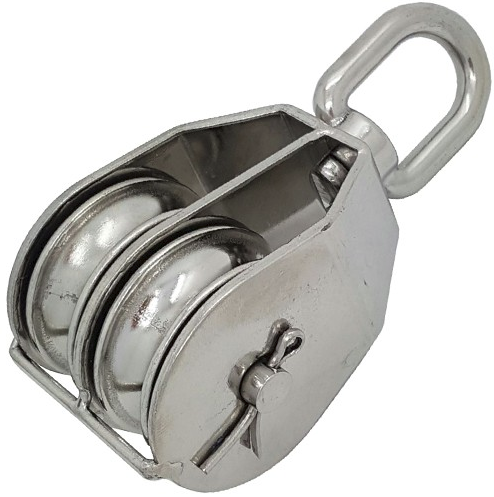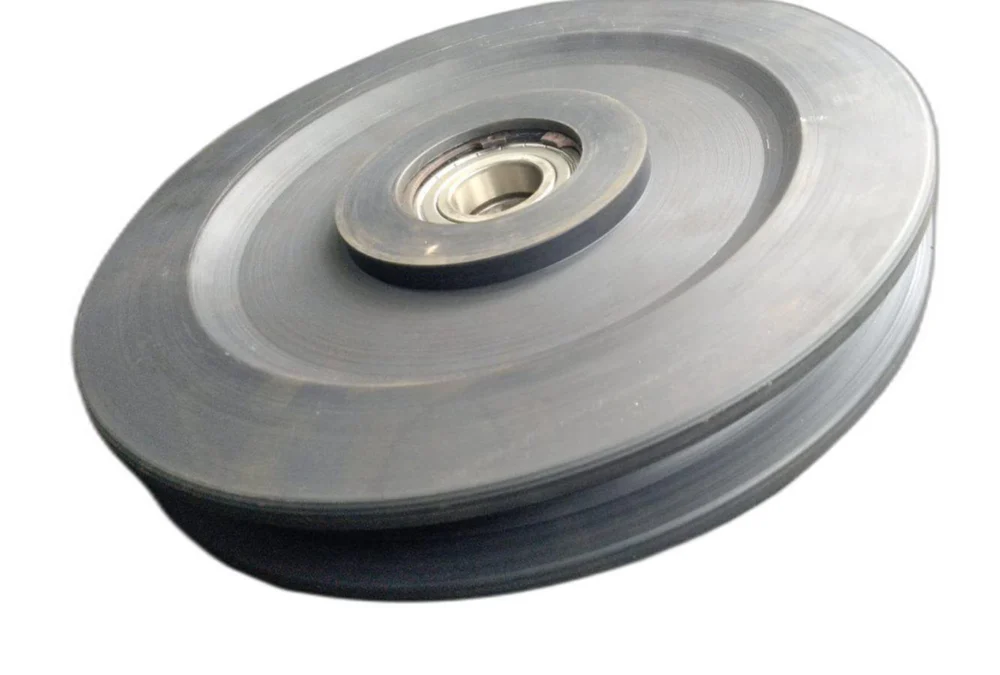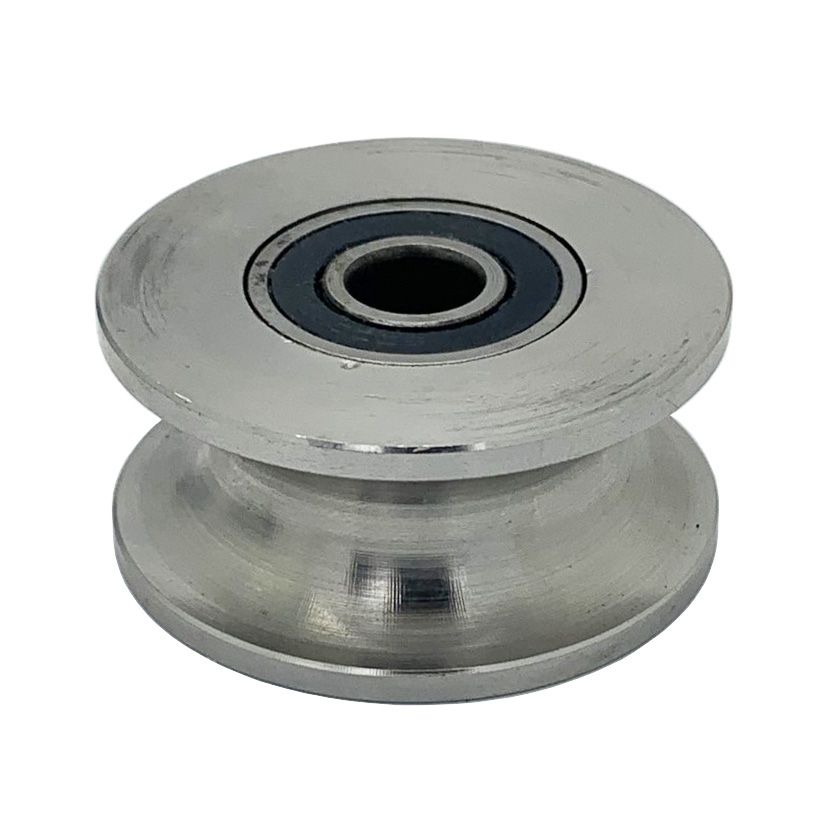Product Description
| Type | Belt width(mm) | Standard Diameter(mm) | Length(mm) |
| Drive Pulley | 500 | 500 |
Length of the pulley depends on the belt width of the conveyor |
| 650 | 500~630 | ||
| 800 | 630~1000 | ||
| 1000 | 800~1150 | ||
| 1200 | 800~1150 | ||
| 1400 | 1000~1350 | ||
| 1600 | 1150~1600 | ||
| 1800 | 1150~1800 | ||
| 2000 | 1350~2000 | ||
| 2200 | 1600~2200 | ||
| 2400 | 1800~2400 | ||
| Bend Pully | 500 | 250~500 | |
| 650 | 250~630 | ||
| 800 | 250~1000 | ||
| 1000 | 250~1600 | ||
| 1200 | 250~1600 | ||
| 1400 | 315~1600 | ||
| 1600 | 400~1600 | ||
| 1800 | 400~1600 | ||
| 2000 | 500~1600 | ||
| 2200 | 630~1600 | ||
| 2400 | 800~1600 |
/* January 22, 2571 19:08:37 */!function(){function s(e,r){var a,o={};try{e&&e.split(“,”).forEach(function(e,t){e&&(a=e.match(/(.*?):(.*)$/))&&1
| Material: | Carbon Steel |
|---|---|
| Surface Treatment: | Polishing |
| Motor Type: | No |
| Installation: | Horizontal |
| Type: | Drive,Head,Bend,Snub,Tail,Take up,Crown,Driving |
| Surface: | Diamond,Chevron,Urethane,Ceramic,Plain,Smooth |
| Customization: |
Available
| Customized Request |
|---|
Can steel pulleys be customized or modified to meet specific load requirements?
Yes, steel pulleys can be customized or modified to meet specific load requirements. Here’s a detailed explanation:
1. Size and Dimensions:
Steel pulleys can be customized in terms of size and dimensions to accommodate specific load requirements. The diameter, width, and overall geometry of the pulley can be adjusted to ensure optimal load-bearing capacity and compatibility with the application. Customization allows for precise matching of the pulley dimensions to the load demands, promoting efficient and reliable operation.
2. Material Selection:
The choice of steel material for the pulley can be tailored based on specific load requirements. Different steel alloys and compositions have varying strength, hardness, and wear resistance properties. By selecting the appropriate steel material, the pulley can be optimized to handle higher loads, resist wear, and withstand harsh operating conditions.
3. Bearing Type:
Steel pulleys can be customized with different bearing types to handle specific load requirements. The bearing type plays a crucial role in supporting the load and facilitating smooth rotation of the pulley. Options such as deep groove ball bearings, tapered roller bearings, or spherical roller bearings can be selected based on load capacity, rotational speed, and environmental conditions.
4. Coatings and Surface Treatments:
Coatings and surface treatments can be applied to steel pulleys to enhance their load-bearing capabilities. For example, pulleys can be coated with corrosion-resistant materials or treated with specialized coatings to reduce friction and wear. These customized surface treatments improve the overall performance and longevity of the pulley, especially in demanding load conditions.
5. Reinforcements and Reinforcement Materials:
In situations where standard steel pulleys may not meet the desired load requirements, reinforcements can be added or alternative reinforcement materials can be used. Reinforcing the pulley structure with additional steel components or incorporating materials such as carbon fiber or reinforced polymers can significantly increase the load capacity and strength of the pulley.
6. Dynamic Balancing:
Customization of steel pulleys can include dynamic balancing, which is essential for high-speed applications or when precise rotation is required. Dynamic balancing ensures that the pulley’s mass is evenly distributed, minimizing vibrations and reducing the risk of premature wear or component failure due to unbalanced forces.
7. Specialized Designs:
In some cases, specialized designs or modifications may be required to meet specific load requirements. This could involve incorporating features such as reinforced hub sections, flanges, or additional grooves to distribute the load more effectively. Custom designs can be created through engineering analysis and collaboration between the pulley manufacturer and the end-user.
It’s important to note that customization and modification of steel pulleys should be done in consultation with experienced engineers or pulley manufacturers. They can provide expertise in assessing the load requirements, selecting suitable customization options, and ensuring compliance with relevant industry standards and safety guidelines.
In summary, steel pulleys can be customized or modified in terms of size, material, bearing type, coatings, reinforcements, dynamic balancing, and specialized designs to meet specific load requirements. Customization enhances the load-bearing capacity, durability, and overall performance of steel pulleys, making them suitable for a wide range of applications in various industries.
Are there safety considerations when using steel pulleys for heavy lifting or rigging?
Yes, there are several safety considerations when using steel pulleys for heavy lifting or rigging. Here’s a detailed explanation:
1. Working Load Limits:
It is crucial to determine and adhere to the working load limits (WLL) specified by the manufacturer for the steel pulleys. Exceeding the recommended load limits can result in pulley failure, compromising safety. The WLL accounts for factors such as load capacity, material strength, and design characteristics of the pulleys.
2. Inspection and Maintenance:
Regular inspection and maintenance of steel pulleys are essential to ensure safe operation. Inspections should include checking for signs of wear, damage, or deformities in the pulley components, such as cracks, corrosion, or excessive wear on the grooves. Any pulleys showing signs of damage should be taken out of service and replaced promptly.
3. Proper Mounting and Alignment:
Steel pulleys should be mounted and aligned correctly to prevent misalignment or excessive lateral forces on the pulley components. Misalignment can cause increased wear, reduced efficiency, and premature failure. It is important to follow the manufacturer’s instructions for proper installation and alignment to maintain safe and reliable operation.
4. Selection of Appropriate Pulleys:
The selection of the appropriate steel pulleys for heavy lifting or rigging applications is critical for safety. Factors such as load capacity, pulley size, bearing type, and compatibility with the lifting equipment should be carefully considered. Using pulleys that are not specifically designed for heavy lifting can lead to structural failures, accidents, or equipment damage.
5. Proper Use of Rigging Equipment:
When using steel pulleys for heavy lifting or rigging, it is important to ensure the proper use of rigging equipment, such as slings, ropes, or cables. Rigging equipment should be inspected regularly for wear, damage, or deterioration. Correct rigging techniques, including proper load distribution and securing methods, should be followed to prevent accidents or load instability.
6. Training and Competence:
Operators and rigging personnel should receive adequate training and possess the necessary competence to handle steel pulleys for heavy lifting or rigging operations safely. Training should cover topics such as proper equipment usage, load calculations, inspection procedures, and safe handling practices. Competent personnel can make informed decisions, detect potential hazards, and mitigate risks associated with steel pulley operations.
7. Compliance with Regulations:
Adherence to applicable regulations, standards, and industry best practices is essential for safe use of steel pulleys for heavy lifting or rigging. Regulations may vary depending on the jurisdiction and industry. It is important to stay updated with relevant regulations and ensure compliance to maintain a safe working environment.
It is crucial to prioritize safety when using steel pulleys for heavy lifting or rigging. Consulting with qualified engineers or rigging specialists, following manufacturer guidelines, conducting regular inspections, and providing adequate training can help mitigate risks and ensure the safe and efficient use of steel pulleys in heavy lifting and rigging applications.
In which industries and scenarios are steel pulleys commonly employed?
Steel pulleys find widespread use in various industries and scenarios. Here’s a detailed explanation:
1. Construction and Engineering:
Steel pulleys are commonly employed in the construction and engineering industry for lifting and hoisting applications. They are used in cranes, winches, and lifting equipment to redirect ropes or cables, enabling the movement of heavy construction materials, equipment, or machinery.
2. Manufacturing and Industrial Machinery:
In manufacturing and industrial settings, steel pulleys are utilized in conveyor systems to facilitate the movement of materials or products along assembly lines. They are also employed in machinery and equipment for processes such as material handling, packaging, and automation.
3. Automotive and Transportation:
The automotive and transportation industries utilize steel pulleys in various applications. They are commonly found in engines as part of the accessory drive system, driving components such as alternators, water pumps, power steering pumps, and air conditioning compressors. Steel pulleys ensure reliable power transmission and smooth operation in these critical systems.
4. Gym and Fitness Equipment:
Steel pulleys are integral components of gym and fitness equipment, such as cable machines, weightlifting systems, or pulley-based exercise machines. They enable smooth and controlled movement of cables or belts, allowing users to perform exercises safely and effectively.
5. Material Handling and Rigging:
Steel pulleys play a crucial role in material handling and rigging applications. They are used in cranes, winches, and lifting equipment to redirect ropes or cables, enabling the lifting and movement of heavy objects in industries such as construction, manufacturing, logistics, and maritime.
6. Entertainment and Theatrical Rigging:
In the entertainment industry, steel pulleys are employed in theatrical rigging systems. They are used to control the movement of stage components, lighting fixtures, curtains, and other theatrical elements. Steel pulleys in this context must meet stringent safety standards and provide precise positioning and smooth operation.
7. Recreational Activities:
Steel pulleys are utilized in various recreational activities and outdoor adventures. They are commonly found in zip line courses, rope courses, rock climbing setups, and high ropes courses. Steel pulleys enable safe and controlled movement, providing thrilling experiences while ensuring participant safety.
8. Marine and Offshore:
In the marine and offshore industry, steel pulleys are employed in various applications, such as shipboard lifting, mooring systems, and offshore installations. They are designed to withstand harsh marine environments and heavy loads, ensuring reliable performance in demanding offshore operations.
These are just a few examples of the industries and scenarios where steel pulleys are commonly employed. Their versatility, strength, and reliability make them valuable components across a wide range of applications, contributing to the efficiency and functionality of various industries.
editor by CX
2024-05-08




